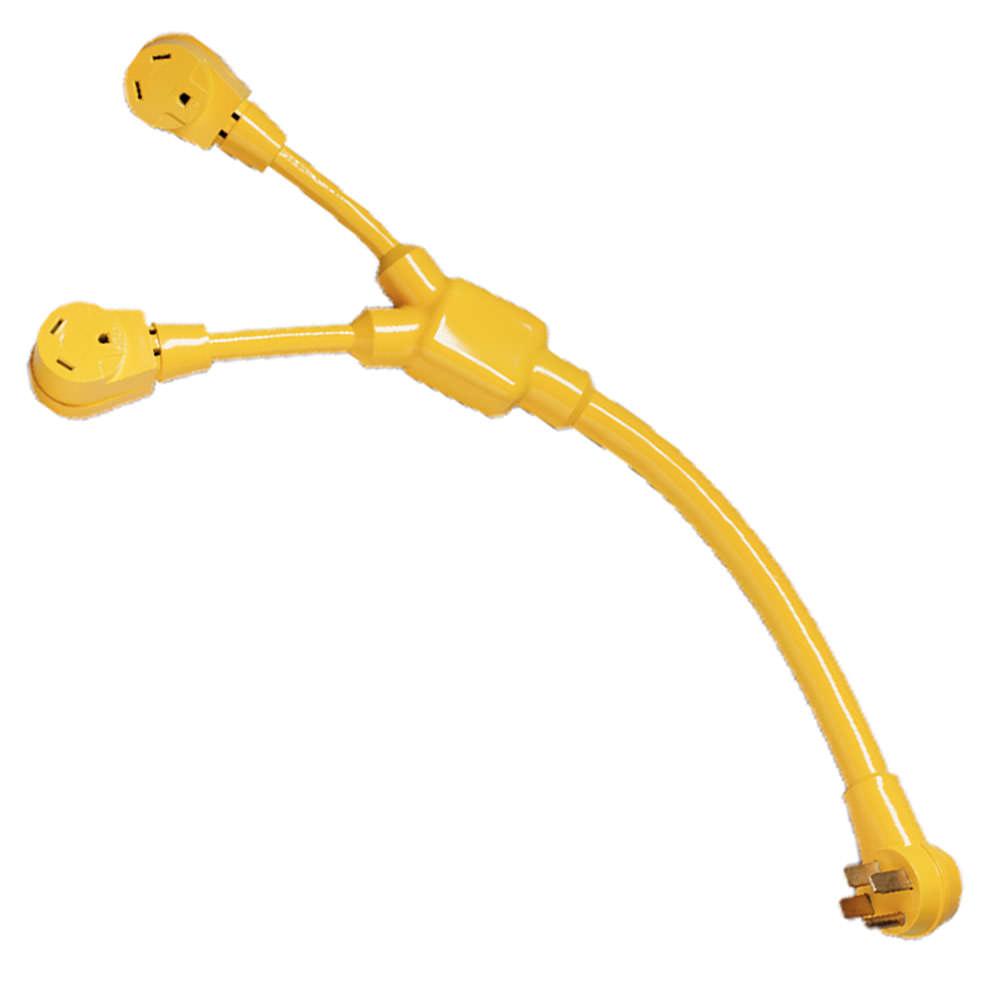Bob_Landry
Mar 25, 2014Explorer
2nd 30A Service
Here's the latest project, an upgrade to a second 30A service. I didn't go to 50A because of cost. Replacing the EMS, the 50A inlet, converter, and shore power cord would have been cost prohibitive and I'm able to use some of the items I had left over from a Class B that I built several years ago.
The electrical panel is a Blue Sea marine panel that was in the van. it came with a dual 30A breaker because in marine applications, you are required to break both hot and neutral legs, not so for RVs. So, I modified this panel to accept 2 separate 30A breakers with a sliding lockout to allow only one source at a time to feed the panel. There will be two 30A inlets, one going through an EMS to the existing converter, and the second which will go directly to this panel. Since I'm getting the two 30A feeds using a breakout box(shown below) plugged into the 50A outlet, both legs can share the same neutral and ground and those will be tied to their respective buss bars. This allows me to have 60A of usable service running off the CG 50A service. One of the 30A breakers is fed directly from the second power cord and the other is fed from the primary power cord. The sliding lockout allows me to use either the second power cord input to the second panel or the primary and this lets me combine both panels in the event I go where there is only 30A service. By combining both panels, I'm back to the original configuration of running everything off the CG 30 outlet if necessary.
The panel has green LEDs to indicate when something is hot, a nice touch, and a red LED that originally was a reverse polarity indicator but can be rewired to show when both panels are in parallel. When I split up and separate the loads, I'll leave the inductive loads on the leg that is EMS protected.
I also have an additional 20A service that I use to run fans or space heaters when necessary so that I don't have to shut off appliances when I run them, thus, no tripped breaker. This is a total of 80A of available power, not as good as 50A, but with one AC it will work fine and I won't have the AC tripping off when DW uses hr hair dryer or runs the microwave.



The electrical panel is a Blue Sea marine panel that was in the van. it came with a dual 30A breaker because in marine applications, you are required to break both hot and neutral legs, not so for RVs. So, I modified this panel to accept 2 separate 30A breakers with a sliding lockout to allow only one source at a time to feed the panel. There will be two 30A inlets, one going through an EMS to the existing converter, and the second which will go directly to this panel. Since I'm getting the two 30A feeds using a breakout box(shown below) plugged into the 50A outlet, both legs can share the same neutral and ground and those will be tied to their respective buss bars. This allows me to have 60A of usable service running off the CG 50A service. One of the 30A breakers is fed directly from the second power cord and the other is fed from the primary power cord. The sliding lockout allows me to use either the second power cord input to the second panel or the primary and this lets me combine both panels in the event I go where there is only 30A service. By combining both panels, I'm back to the original configuration of running everything off the CG 30 outlet if necessary.
The panel has green LEDs to indicate when something is hot, a nice touch, and a red LED that originally was a reverse polarity indicator but can be rewired to show when both panels are in parallel. When I split up and separate the loads, I'll leave the inductive loads on the leg that is EMS protected.
I also have an additional 20A service that I use to run fans or space heaters when necessary so that I don't have to shut off appliances when I run them, thus, no tripped breaker. This is a total of 80A of available power, not as good as 50A, but with one AC it will work fine and I won't have the AC tripping off when DW uses hr hair dryer or runs the microwave.



